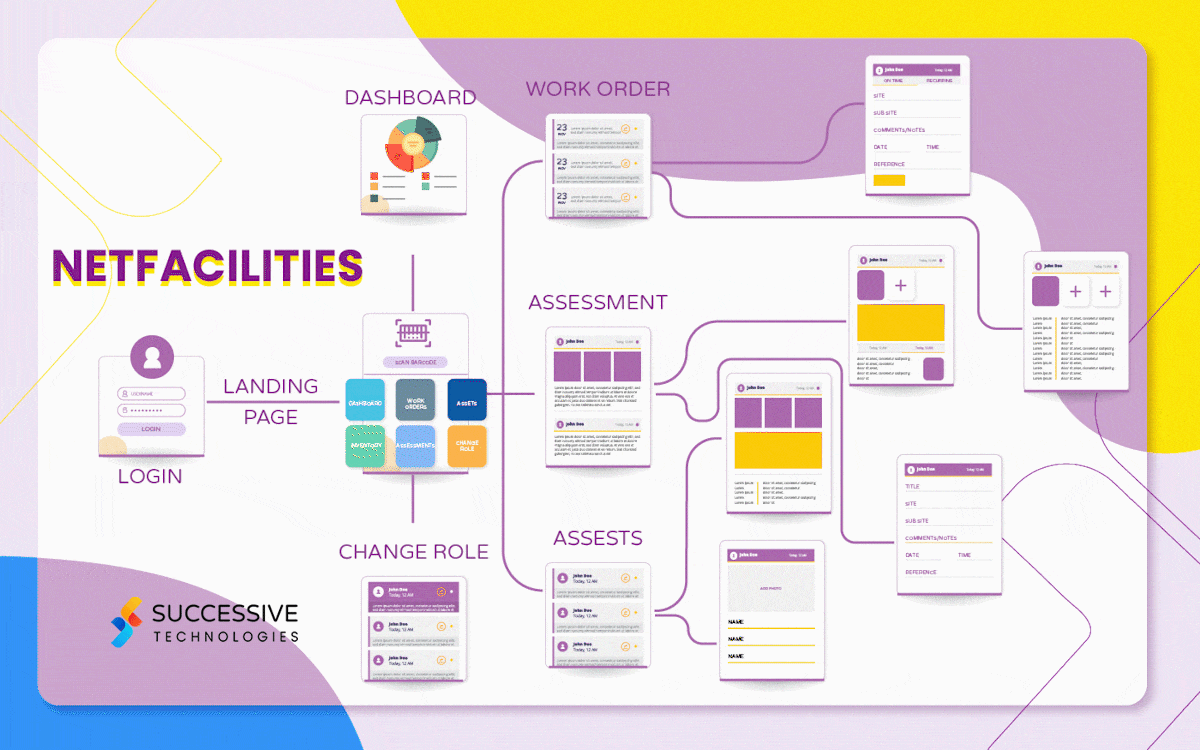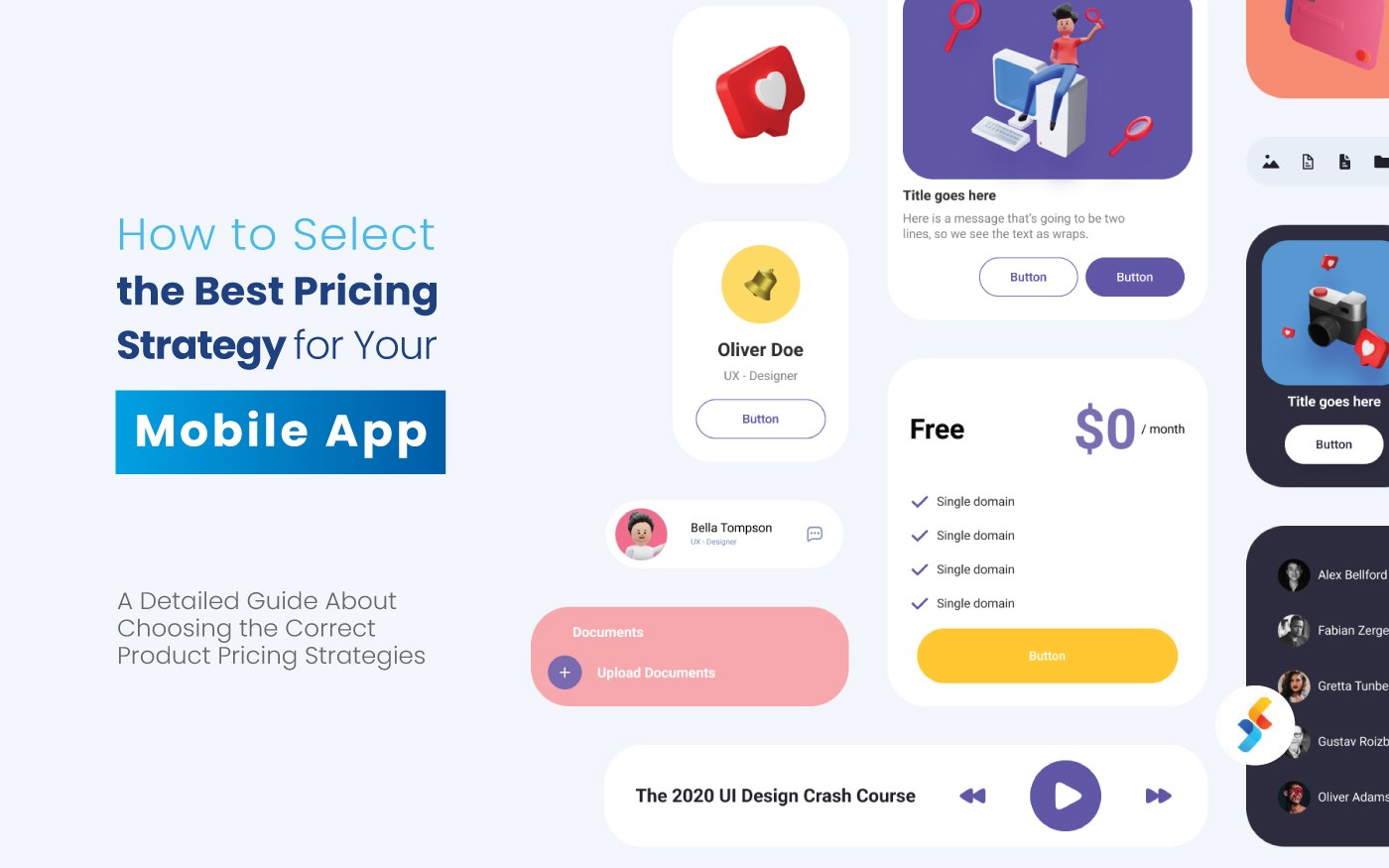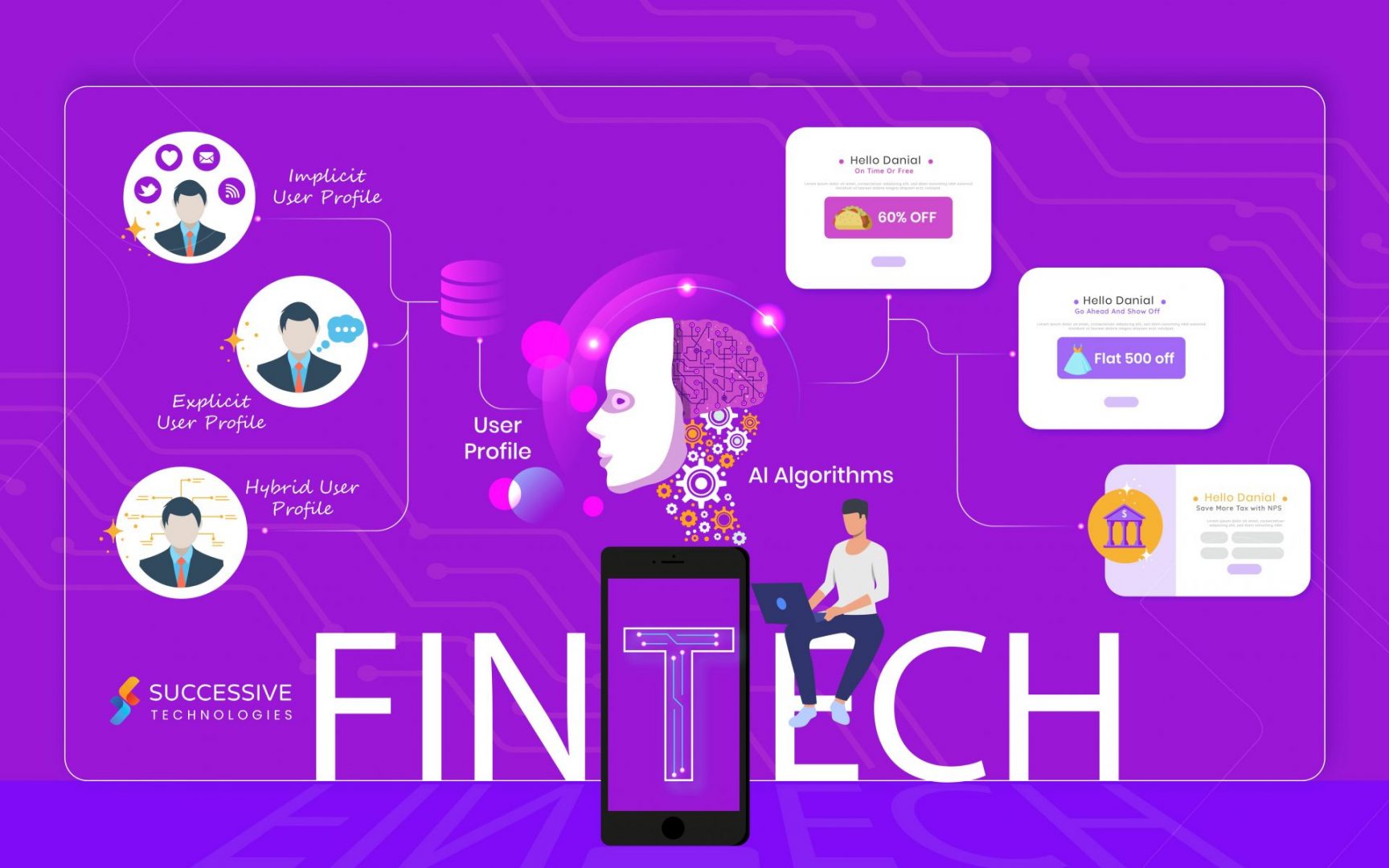The growing preference for online streaming services over traditional Tv, and the growth in demand for real-time videos are some of the opportunities for the video streaming software market growth.
Though there is a lack of accessibility to robust video infrastructure that represents a significant challenge for the development and growth of the video streaming software market.
But lucrative opportunities lie ahead as Yahoo predicated that the video streaming software market size is expected to grow from USD 11.0 billion in 2023 to USD 25.5 billion by 2028 at a Compound Annual Growth Rate (CAGR) of 18.3% during the forecast period.”
If you want to take advantage of the significant growth poised in developing video streaming apps, this comprehensive guide is for you. In this blog, we will be discussing the types of video streaming apps, their use cases, key specifications of video streaming apps, video streaming app development processes, technology stacks, team structure, and development cost.
Let’s begin!
Table Of Contents
- How Many Types Of Video Streaming Apps Can Be Developed?
- What Are The Use Cases Of Video Streaming App Development?
- What Is Live Video Streaming App Development Process?
- Key Specifications Of Video Streaming App Development
- How Much Does It Cost To Create A Video Streaming App?
- Why Create A Video Streaming App With Successive Digital?
- Conclusion
How Many Types Of Video Streaming Apps Can Be Developed?
From fulfilling personal entertainment needs to connect with office employees or people who sit miles apart, we use different video streaming apps. Netflix, Amazon Prime, and others provide on-demand entertainment, whereas Zoom and Microsoft Teams allow us to connect for professional needs.
The streaming category can be divided into two main types: live streaming and video-on-demand streaming. Among these segments, live streaming is projected to exhibit the highest compound annual growth rate (CAGR) of 21.7%. The rise of mobile devices, laptops, and tablets has led to an increased reliance on these devices for video streaming purposes. Consequently, the demand for live video streaming solutions has soared. This escalating demand presents fresh prospects for solution providers to captivate their customers by delivering high-definition (HD) video services.
Similarly, various types of video streaming apps can be developed based on different features, purposes, and target audiences. Here are some common types, includes:
Live Streaming Apps:
These apps enable real-time streaming of events, sports, concerts, gaming, and other live content. Examples include Twitch, YouTube Live, and Facebook Live.
Video-On-Demand (VOD) Apps:
These apps allow users to access pre-recorded videos or movies on demand. Netflix, Amazon Prime Video, and Disney+ are popular examples of VOD apps.
Social Media Streaming Apps:
These apps combine video streaming with social networking features, allowing users to share and stream videos within their social networks. Examples include Instagram Live, Facebook Watch, and TikTok.
Music Streaming Apps:
Although not exclusively focused on video, some music streaming apps like Spotify, Apple Music, and YouTube Music also provide video content such as music videos and live performances.
Educational Streaming Apps:
These apps offer educational content in the form of video lectures, tutorials, online courses, or webinars. Platforms like Udemy, Coursera, and Khan Academy fall into this category.
Video Messaging Apps:
While primarily focused on communication, video messaging apps like WhatsApp, Snapchat, and Instagram Direct allow users to send and receive short video messages.
Sports Streaming Apps:
These apps specifically cater to sports enthusiasts, providing live streaming of sporting events, highlights, analysis, and related content. Examples include ESPN, DAZN, and NBA League Pass.
Corporate Streaming Apps:
These apps are designed for internal communications within organizations, allowing companies to stream town hall meetings, webinars, and training sessions to their employees. Zoom, Microsoft Teams, and Cisco Webex are commonly used for this purpose.
These are just a few examples, and the possibilities are not limited to these categories. Developers can also create niche streaming apps targeting specific interests or industries, combining multiple features, or introducing innovative concepts.
To gain a comprehensive understanding of “On-Demand App Development Guide,” we highly recommend reading this blog post, which provides valuable insights and actionable tips.
What Are The Use Cases Of Video Streaming App Development?
Live video streaming apps have a wide range of use cases across various industries and domains. These apps have become mainstream in day-to-day life since people use them to connect and communicate with each other. Whatsapp video calls have become common communication methods in households, Netflix, Amazon Prime, YouTube, and Netflix are picked over TV for refreshments, and Microsoft Teams and Google Chats are common day-to-day office applications to perform jobs efficiently with distributed teams. Here are some common use cases of live video streaming apps:
Events And Conferences:
Live video streaming apps enable organizations to broadcast conferences, trade shows, seminars, and other events to remote attendees who cannot physically be present. It allows people to participate in real-time, watch keynote speeches and panel discussions, and engage with the event virtually.
Gaming And eSports:
Live video streaming is extremely popular in the gaming and eSports industry. Gamers can stream their gameplay live, interact with viewers, and build a community around their content. eSports tournaments are also live-streamed, allowing fans to watch their favorite teams and players compete in real-time.
Social Media And Influencers:
Influencers and content creators use live video streaming apps to engage with their followers and provide real-time updates, behind-the-scenes content, Q&A sessions, product launches, and other interactive experiences. It helps build a closer connection with their audience.
News And Journalism:
Live video streaming apps play a crucial role in news reporting, allowing journalists to cover breaking news, events, and interviews as they happen. News organizations use these apps to deliver live news updates and engage with viewers through comments and questions.
Education And Training:
Live video streaming apps are utilized in the education sector for conducting online classes, webinars, and virtual training sessions. Teachers and trainers can deliver lectures, demonstrate concepts, and interact with students in real-time, regardless of their geographical location.
Fitness And Wellness:
Live video streaming apps offer fitness trainers, yoga instructors, and wellness professionals a platform to conduct live workout sessions, virtual classes, and personalized training. Users can participate in real-time workouts from the comfort of their homes.
Product Demonstrations And Sales:
Businesses use live video streaming apps to showcase and demonstrate their products or services to potential customers. It allows companies to engage with their audience, answer questions, and provide live demonstrations, creating interactive sales experiences.
Sports And Sporting Events:
Sports organizations and teams utilize live video streaming apps to broadcast matches, tournaments, and sporting events to fans worldwide. Fans can watch the action live, get real-time updates, and engage in discussions during the event.
These are just a few examples of the diverse use cases for live video streaming apps. The flexibility and real-time nature of live streaming provide opportunities for interactive communication, entertainment, information sharing, and community building across various industries.
What Is Live Video Streaming App Development Process?
We hope you have grabbed insights into the prerequisite significant to develop a video streaming app. However, the process doesn’t end here. You need to decide the type of app you want to build, consider law and compliance needs, decide on features, identify monetization opportunities, find the right team of engineers, and decide on the technology stack. Each stage has its importance in developing a successful app. Let’s check each process in detail and understand its significance.
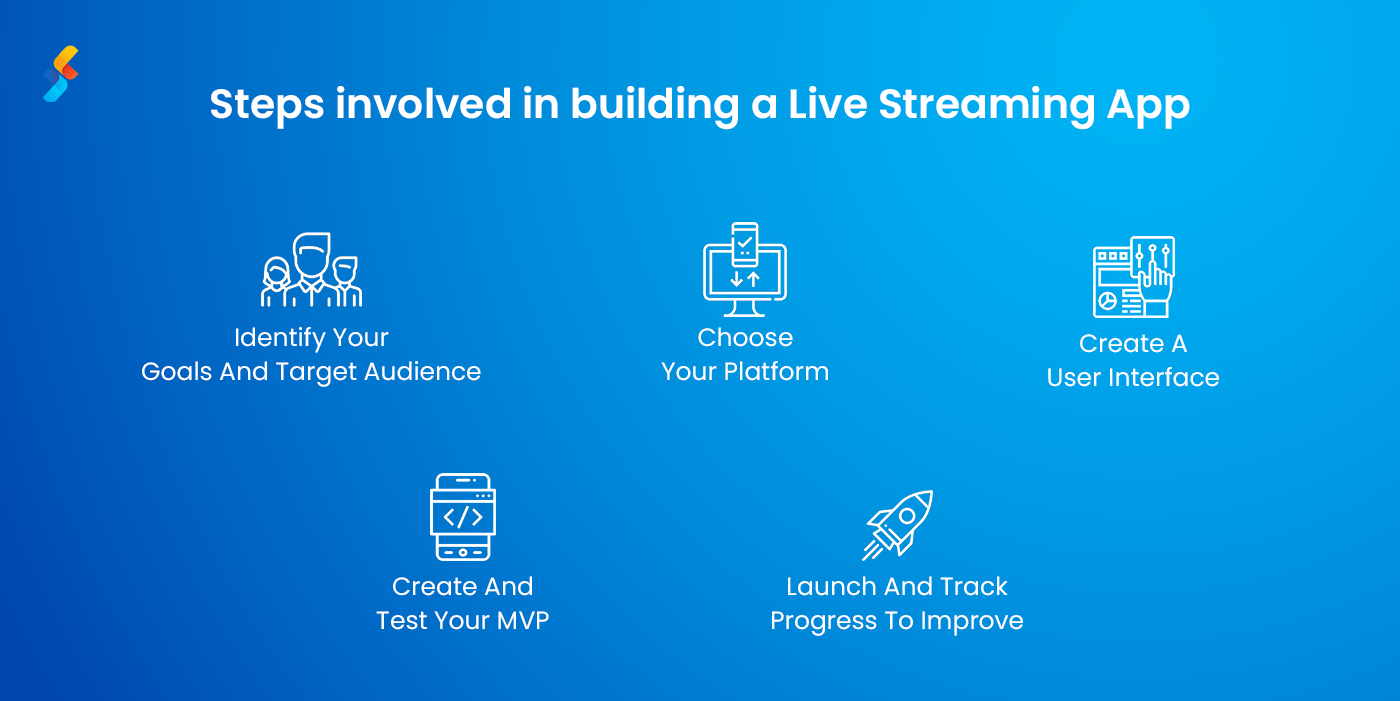
Step 1. Define Your Niche
In a highly competitive landscape encompassing numerous live video streaming platforms across diverse industries, it is crucial to approach the development of a new streaming app with precision rather than assumptions. Thoroughly study your market segment and carefully examine the offerings of your competitors. Conduct interviews with potential users to gain insights into the specific challenges they encounter. This process will enable you to understand how your application can effectively address those issues and meet the needs of your target audience.
Step 2. Choose A Monetization Strategy
The three most popular monetization models that you can pick for your streaming app could be; paid app, subscriptions, and showcasing advertisements. Depending on your business model, you can build one or two monetization modules for your app.
Step 3. Select The Right Technology Stacks
Along with choosing a video processing platform, you will also have to choose the actual technology for building a streaming app. No matter if you want the app to develop as native Android or iOS or wish to go with a hybrid or cross-platform model such as flutter app development model, you need a technology stack beyond a front end to ensure optimum performance and availability. Below is the list of current in-demand tools for building such applications:
Programming languages for web apps (followed by the relevant frameworks): C++ (GO), HTML5/CSS3, Java, JavaScript (Node.js, React, RxJS, Restify, Ember JS, AngularJS, Backbone JS), Python, Ruby (Ruby on Rails).
Programming languages for mobile apps: Swift (for iOS), Kotlin/Java (for Android).
Media processing platform: AWS Elemental Media Convert
Data management systems: Atlas-DB, Cassandra, MySQL, Oracle, PostgreSQL.
Cloud platforms: Amazon EC2, Amazon S3.
Analytics and insights: Google Mobile App Analytics, Flurry Analytics, Hadoop, Hive, MixPanel, Localytics, Mode, Parquet, Pig, Presto, Spark.
CDN services: Amazon CloudFront, Cloudflare, Fastly, Open Connect
Streaming protocols: RTMP, Adobe HTTP Dynamic Streaming, Apple HTTP Live Streaming, M2TS, MPEG-DASH, Microsoft Smooth Streaming, WebRTC, RTSP/RTP.
Media formats: MKV, MP4, AVCHD, AVI, DMW, MOV, FLV, WMV, SWF.
Codecs: H.264/AVC, FFmpeg, XviD.
Media containers: MP4, FLV.
Managed live streaming: Amazon IVS, AWS Elemental MediaLive, DaCast, Wowza
Geolocation: Google Maps API, MapKit/Core Location frameworks (for iOS).
Messaging: Firebase, SendBird, PubNub, Twilio.
Managed chat for streaming: Amazon IVS
This is not a comprehensive list of technology stacks used for video streaming app development. However, you can select and optimize these technologies based on your app’s specifications to ensure it delivers only good performance even in case of low internet speed or limited online access.
Step 4. Set Up Your Team
To efficiently develop and deploy an application, you need help from an experienced and skilled software development team. If you have people with technical mindset and expertise, from CTO to project manager, developers to QA engineers, or DevOps specialists, you can begin your project development.
However, if it’s only you with your astonishing business idea, you can hire a complete team with experience from a live streaming app development company. A basic team structure of a software development team often ends up as follows:
- Frontend Developer
- Backend Developer
- UI/UX Or Mobile App Designer
- Business Analyst
- Project Manager
- QA Engineer
- DevOps Engineer
- Team Lead
Step 5. Adopt And Implement Legal Requirements
Meeting legal regulations and compliance needs based on the state you want the application to run is crucial. As users register on your platform and their personal data is stored within your application, including their financial information like debit or credit card details, it becomes essential to adhere to data protection regulations such as GDPR or CCPA.
Step 6. Pick The Right Features For Video Streaming App Development
Irrespective of the specific type of video streaming app you choose to develop, it is crucial to consider how your tool will differentiate itself from the competition. Modern users are inclined towards applications that offer them personalization options, including curated content, relevant recommendations, and updates regarding new videos that align with their interests.
You need to facilitate all relevant features to the user panel while also ensuring that you have ample command and control available to your admin panel. Henceforth, some of the basic yet crucial features that you must build in your android live streaming app development or iOS segregated for the two user panels are as follows:
Video Streaming App Development Features In User Panel
User panel features are customized based on specific goals and the target audience you decide for your video streaming app. Still, some common features that you must built-in are:
1. User Registration And Authentication:
- User registration and login options (email, social media, etc.)
- Password recovery/reset functionality
- Account settings and profile management
2. Content Discovery And Search:
- Browse and search for videos based on various criteria (genre, popularity, new releases, etc.)
- Personalized content recommendations based on viewing history and preferences
- Trending and popular video sections
3. Video Playback And Controls:
- Smooth video playback with adaptive streaming technology
- Play, pause, rewind, and fast-forward controls
- Volume and playback speed control
- Subtitle and closed caption options
- Video quality selection
4. Playlist And Watch Later:
- Create and manage playlists for organizing favorite videos
- Ability to save videos to a “Watch Later” list for easy access
5. Social Features:
- Like, comment, and share videos with other users
- Follow and interact with other users or content creators
- Social media sharing options
6. Personalization And Recommendations:
- Personalized homepage with recommended videos
- Option to customize video recommendations based on preferences
7. User Interaction And Engagement:
- Ability to leave reviews and ratings for videos
- Option to create and participate in discussions or comment sections
- User activity tracking and history
8. Subscription And Billing:
- View and manage subscription details
- Upgrade or downgrade subscription plans
- Billing history and payment information management
9. Notifications And Alerts:
- Receive notifications for new video releases, comments, likes, etc.
- Email or push notifications for important updates
10. Offline Viewing:
- Option to download videos for offline viewing
- Download management and storage settings
11. Settings And Preferences:
- Account settings (password, email preferences, etc.)
- Playback settings (auto-play, video quality preferences, etc.)
- Language and subtitle preferences
12. Help And Support:
- Access to FAQs, help articles, and tutorials
- Contact customer support or submit feedback
Enabling the users with ample support and self-help features allows them to have complete control over how they want to use the app. It derives better satisfaction and engagement within the app.
Video Streaming App Development Features In Amind Panel
Since user needs are constantly evolving, having control over the app and continuous tracking of user engagement and innovation is important to instill within the app. Ensure you have all required features within the admin panel that allows you to modify and make changes as and when required.
1. User Management:
- User registration and authentication
- User profile management
- User roles and permissions management
- User activity tracking and reporting
2. Content Management:
- Video upload, editing, and deletion
- Metadata management (title, description, tags, categories, etc.)
- Content scheduling and publishing
- Content monetization options (subscription, pay-per-view, ads, etc.)
- Content analytics and reporting
3. Payment And Subscription Management:
- Subscription plans management
- Payment gateway integration
- Revenue tracking and reporting
- Refund and cancellation management
4. Analytics And Reporting:
- User engagement metrics (views, likes, comments, shares, etc.)
- Watch time analytics
- Geographic and demographic data
- Content performance analytics
- Ad performance analytics (if applicable)
5. Advertising Management (if applicable):
- Ad inventory management
- Ad placement and targeting options
- Ad campaign management and reporting
6. Live Streaming Management (if applicable):
- Live event scheduling and setup
- Live chat moderation
- Live analytics and reporting
7. Content Moderation:
- User-generated content moderation (comments, reviews, etc.)
- Automatic content filtering and flagging
- Manual content moderation tools
8. Notifications And Communication:
- Push notifications management
- Email notifications and templates
- In-app messaging and announcements
9. Integration And API Management:
- Third-party integrations (social media, analytics, etc.)
- Developer API access and documentation
10. System Settings And Configuration:
- App settings management (branding, localization, etc.)
- SEO settings (metadata, URL structures, etc.)
- System logs and error handling
Step 7. Create And Test Your MVP
As you get the app features list handy and have decided the team you may need to develop a video streaming application, you must begin developing MVP for your project idea. At this stage, you get your application working as you defined. You can start your business operations with an MVP application and make an impact within the industry.
Step 8. Launch And Track Progress To Improve
Usually, a software development company handover an MVP application and help you launch it on your desired platform. Since app development and business operations are not one-time jobs, you need support to keep track of the progress and implement improvements to attract and retain users and customers. Based on real-world users, we can further enhance the application’s features, performance, scalability, and other aspects of your app to increase your reach and boost the brand’s credibility.
Yet again, specific features and functionalities of an admin panel can vary depending on the requirements and goals of the video streaming app. Hence decide them carefully, and for that, you can consult with an experienced custom mobile app development company.
Key Specifications Of Video Streaming App Development
When you want to create a streaming software or application, we want to keep you aware that these applications require additional technical considerations besides programming languages, databases, and other elements. Based on the type of video streaming app you want to develop and the problem you intend to solve, the application’s technology stack and its complete architecture will vary significantly. Let’s discuss those additional tech stacks you will need to develop a video streaming application.
Maintaining Queueing System
Developing a video streaming app requires you to maintain an appropriate queueing system for an effective processing framework. You need to maintain fault-tolerant processing, secure storage, and effective geographic distribution of the video content. One of the best options to maintain the queueing system for your streaming software is to use Apache Kafka or Amazon SQS services.
Adopt Streaming Protocols
You should familiarize yourself with two protocols: RTMP, which facilitates high-definition streaming, and WebRTC, which enables real-time communication. RTMP is ideal for transmitting top-notch audio and video content, making it a great option for broadcasting conferences or concerts. However, it has a longer processing time compared to WebRTC. On the other hand, WebRTC is well-suited for supporting real-time communication and video calling platforms like Zoom and Hangouts. Nevertheless, it provides lower transmission quality when compared to RTMP.
Establish A Reliable Storage System
In the realm of video streaming app development, guaranteeing dependable storage is crucial. It is essential to store your video content in a location that enables seamless streaming without any disruptions. Opting for cloud services proves to be an excellent solution in this scenario, as they offer affordability and effortless scalability.
Use Content Delivery Network
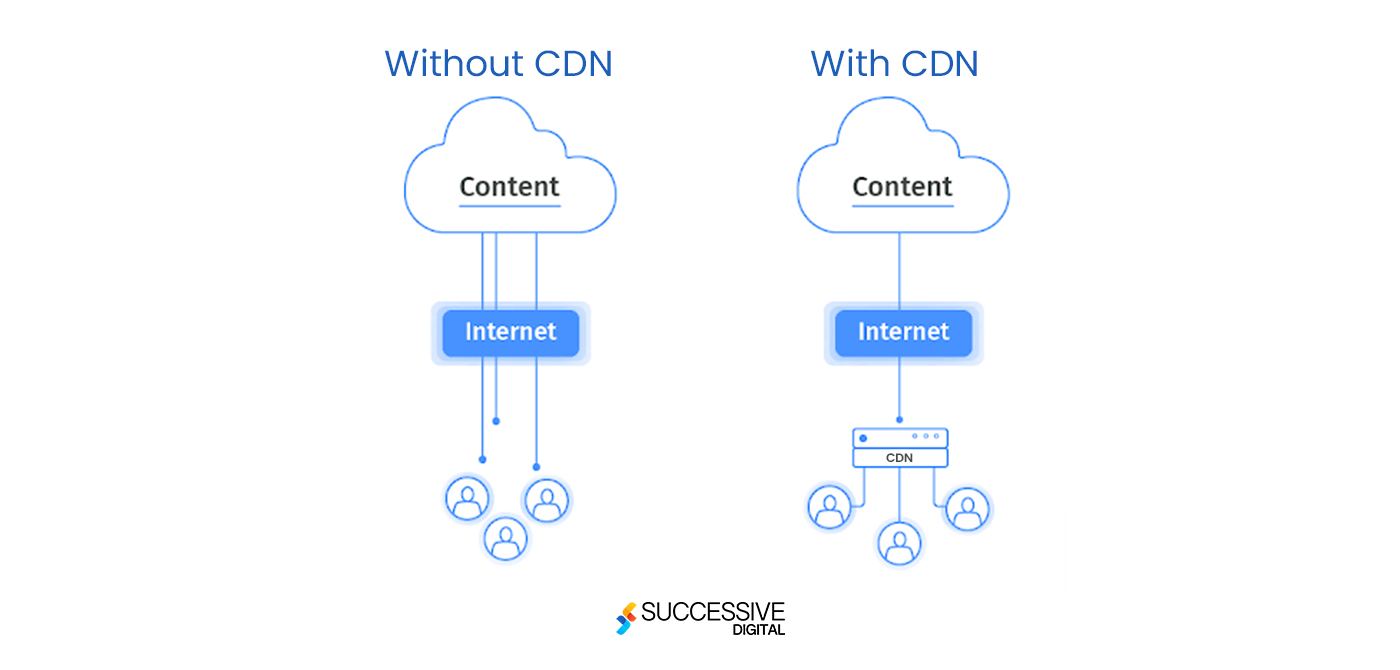
Selecting the appropriate CDN is vital to ensure the optimal availability and performance of the video stream. This entails placing the content as close to the user as possible, thereby enhancing the overall speed of your streaming application.
AWS CloudFront is a widely recognized choice that fuels numerous popular streaming services such as Netflix AWS Media Live. Amazon Chime is worth considering when it comes to real-time WebRTC video rooms. If you require the development of an interactive live stream and find AWS lacking in speed, Agora.io may be a suitable alternative.
Media Player
Initially, you need to determine the platforms on which you intend to make your video streaming service accessible. Will it be through a web app, mobile devices, smart TVs, Tesla screens, or a combination of all of them? Various options are at your disposal that supports HTML5 streaming, including open-source software.
These specifications define the architectural and engineering needs of your video streaming application. When you want to develop a custom streaming solution, make sure you have a clear idea of what problem you are trying to solve through your video streaming app.
How Much Does It Cost To Create A Video Streaming App?
Now you may be thinking of how much a video streaming app costs to develop. We would like to tell you that the cost of developing a video streaming app is substantial. A working prototype could cost you around $40,000 – $60,000. In contrast, a full-fledged platform may cost between $200,000 – $450,000. Though this cost includes software development for web, desktop, and mobile apps. We would like to mention that developing a streaming app and optimizing it to have a scalable architecture requires a lot of effort and time.
In addition to this, you may require comprehensive support from cloud and DevOps specialists to optimize the use of storage and retrieval services. Implementing CND strategically and deciding whether to set it up with the team via customization options or go with a managed solution also contributes to the development cost of a streaming application.
If you are curious about a detailed estimate of streaming app development, connect with our consultants today. They can help you identify the specifics of an app you want to develop and can guide you through an MVP Development for your video streaming app.
Discover the secrets of estimating your budget for Mobile App Development! Dive into our comprehensive guide now and gain valuable insights.
Why Create A Video Streaming App With Successive Digital?
Developing a live streaming app is neither complicated nor complex. All it requires is the technical knowledge that comes with experience and business acumen in the video streaming market. Since Successive has helped companies and entrepreneurs build live video streaming apps from scratch for corporate communications and conferences, OTT platforms, and others, we have hands-on experience in deploying custom video streaming app development.
We have the industry knowledge and technical capabilities, including cloud and DevOps solution development, that make us the right choice to help you with your next project. We are an AWS Advanced Consulting partner, so we are equipped with what it takes to implement AWS solutions and products to build a streaming app.
Experience the transformative power of our services and witness the success stories of businesses we have helped thrive. Discover how our smarter and more innovative approach has made a significant impact globally.
Conclusion
The development of personalized video streaming applications is rapidly growing in popularity and presents significant business prospects for creators of video content. Enhancing your understanding of the process of building a platform boosts the likelihood of successfully launching a live streaming application that can thrive in a highly competitive market. Seeking guidance from industry experts can assist you in establishing the groundwork for the development of your video streaming application in the future.










